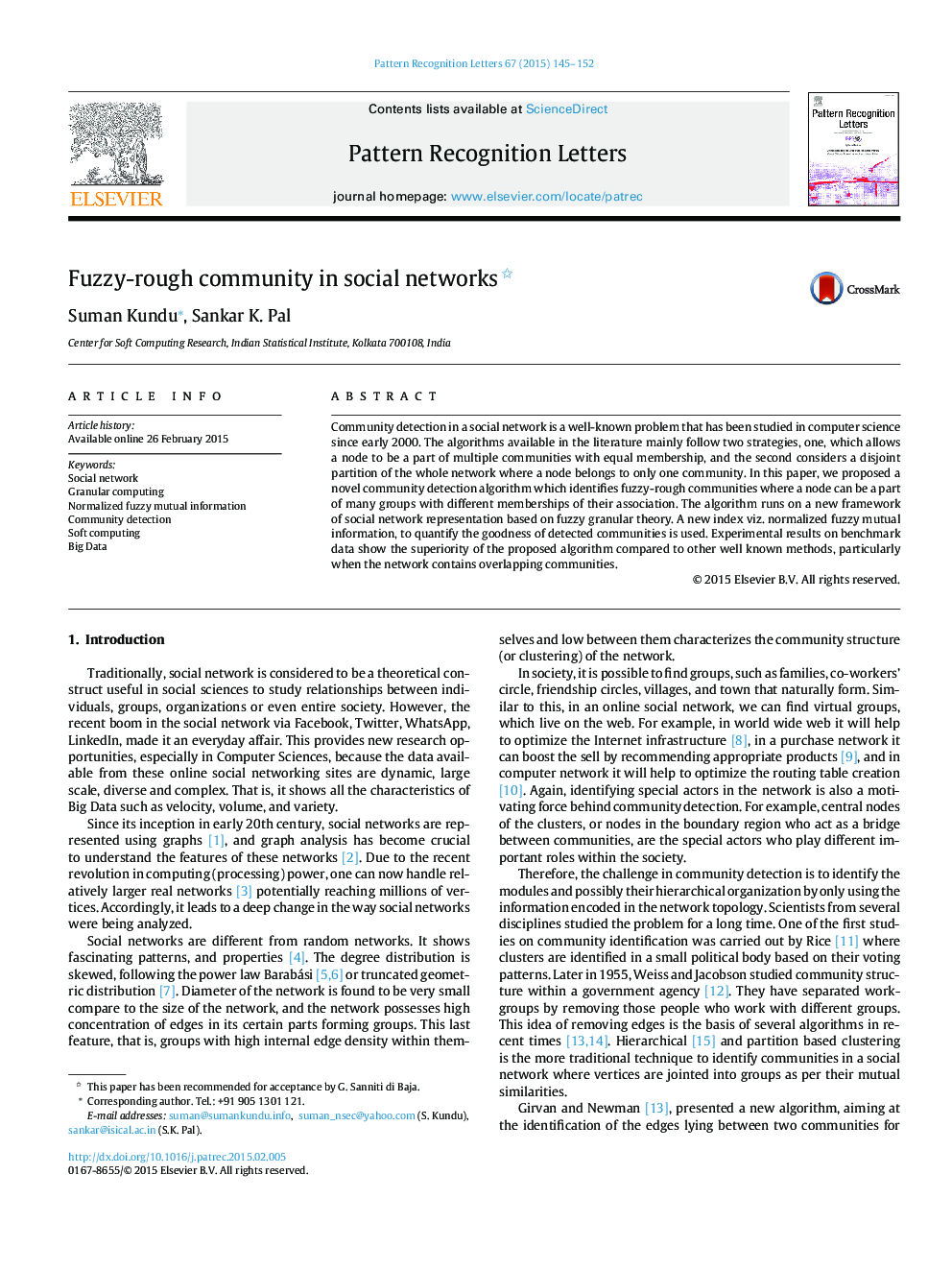| Article ID | Journal | Published Year | Pages | File Type |
|---|---|---|---|---|
| 534036 | Pattern Recognition Letters | 2015 | 8 Pages |
•A novel community detection algorithm to identify fuzzy-rough communities is proposed.•A node can be a part of many groups with different memberships of their association.•Runs on a new model of social network representation based on fuzzy granular theory.•A new index viz. normalized fuzzy mutual information is used to quantify the goodness.•When the network contains overlapped communities, the algorithm is superior.
Community detection in a social network is a well-known problem that has been studied in computer science since early 2000. The algorithms available in the literature mainly follow two strategies, one, which allows a node to be a part of multiple communities with equal membership, and the second considers a disjoint partition of the whole network where a node belongs to only one community. In this paper, we proposed a novel community detection algorithm which identifies fuzzy-rough communities where a node can be a part of many groups with different memberships of their association. The algorithm runs on a new framework of social network representation based on fuzzy granular theory. A new index viz. normalized fuzzy mutual information, to quantify the goodness of detected communities is used. Experimental results on benchmark data show the superiority of the proposed algorithm compared to other well known methods, particularly when the network contains overlapping communities.
